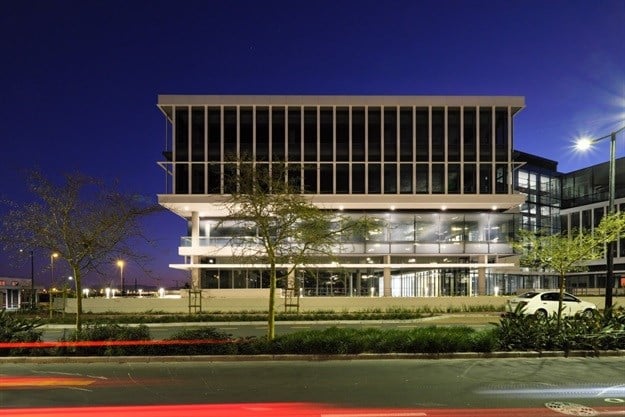
Top stories


Marketing & MediaCammy Msimango on finding her footing in South Africa’s fast-moving digital newsroom
Esther Tomorrow, MDNTV 19 hours




More news




Originally dubbed the ‘macro-chip shuffle’, the buildings’ composition was inspired by shuffling forms that operate independently and adapt to their immediate surroundings. The development was intentionally designed to appear as a single large complex and simultaneously as four small independent volumes depending on from where it is viewed. The four volumes are further broken down into thirds - a double height layered mass and a single height crystalline cube. Each of these thirds shift and jump on the horizontal and vertical plain to achieve maximum views and optimal orientation. A large part of the buildings’ concept was manifested in its structure - creating distinct floating boxes that veer off and cantilever beyond one another.

Both buildings have four storeys with two levels of underground parking. The buildings comprise a concrete backbone and glass and aluminium façade cladding with a massive offset concrete cube that is both functional and attractive.
dhk associate director and lead architect on the project Henry Abosi says, “On an abstract level, the spaces are duplicated, and the volumes are inverted. This simple application was the singular method to the complexity of the resultant macro-articulation which forms a setting for a series of tableaux with an iconic mountain backdrop. In effect, this complex was set out in scenes that take inspiration from aspects of cinematography and film.”

In accordance with the shifting floor plates, two systems of glazed façade have been installed over the three levels of office. A deliberate, yet playful interchange of these systems contributes to the aesthetic complexity of the building.
Internally, the buildings have two wings with a central core and full height atrium bringing light into the centre of the expansive floor plates. The wings are connected by a series of bridges spanning across the atrium at the edge of the main core. The core is a stand-alone element which is exposed on both sides of the building. From the rear, this concrete cube protrudes and is visible from over a kilometre away. It forms the proverbial ‘heart’ of the building, circulating people left to right, up and down and into different chambers in the building.

Each building encloses a landscaped courtyard, bringing nature into the fabric of the buildings and provides outdoor breakaway places for staff. On the upper levels, a wrap-around terrace takes advantage of the buildings’ prime position - providing additional outdoor spaces for the offices located on this level.